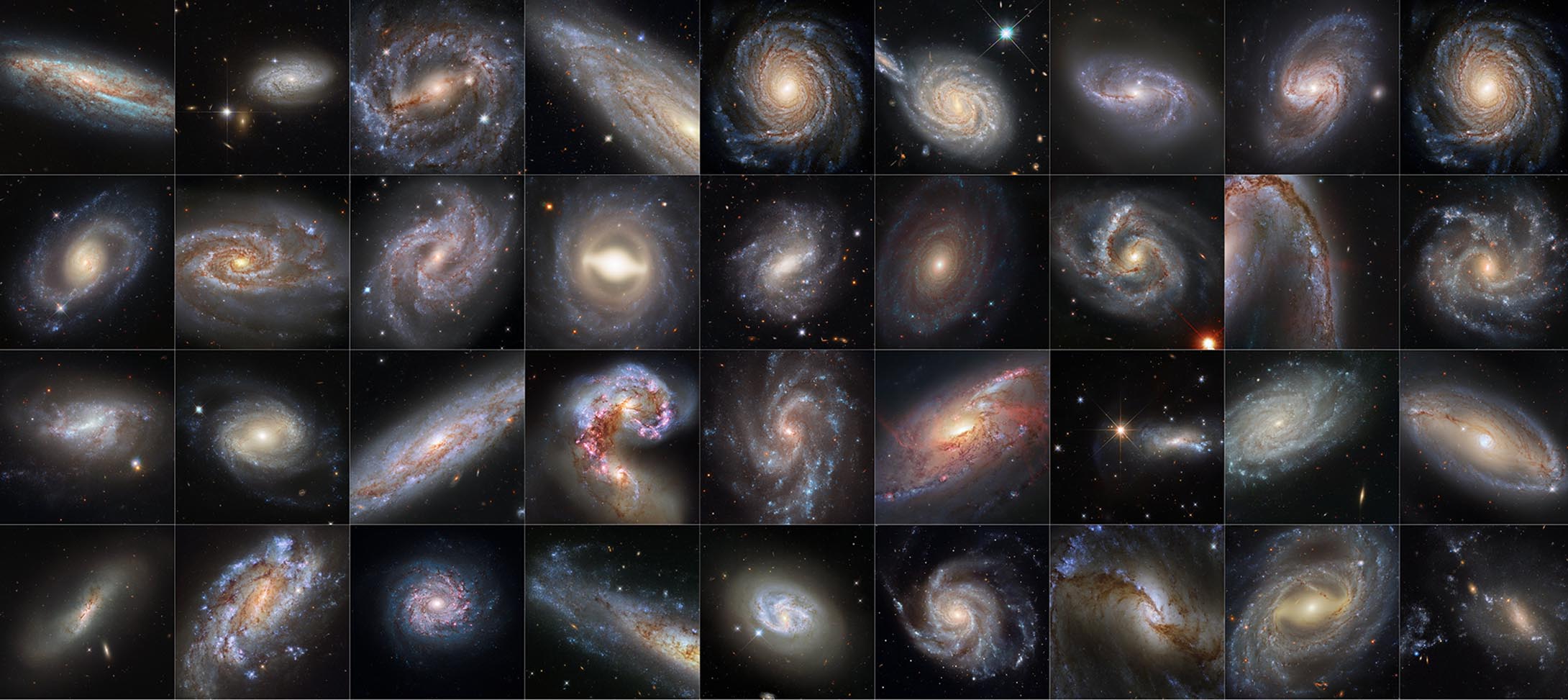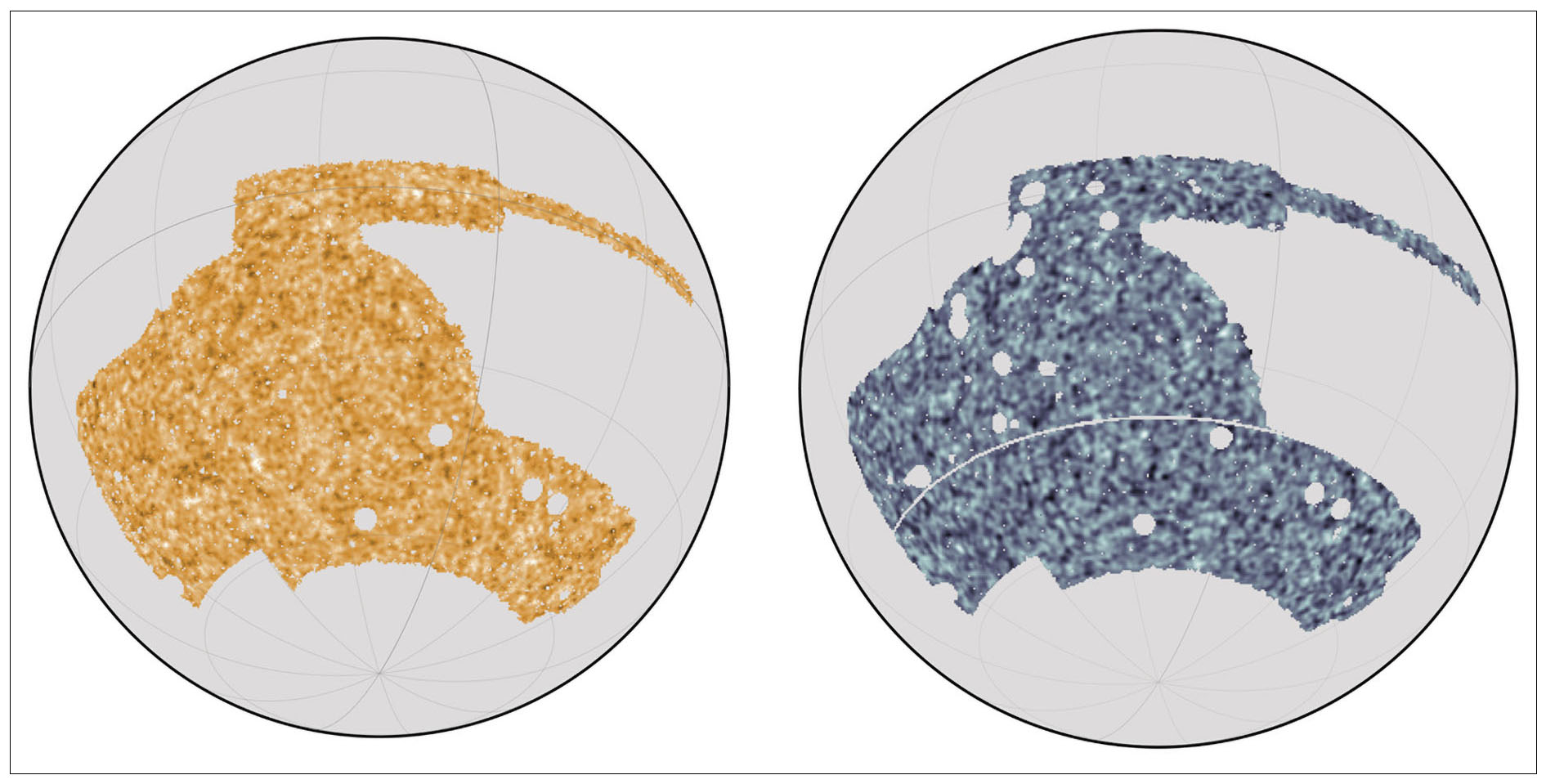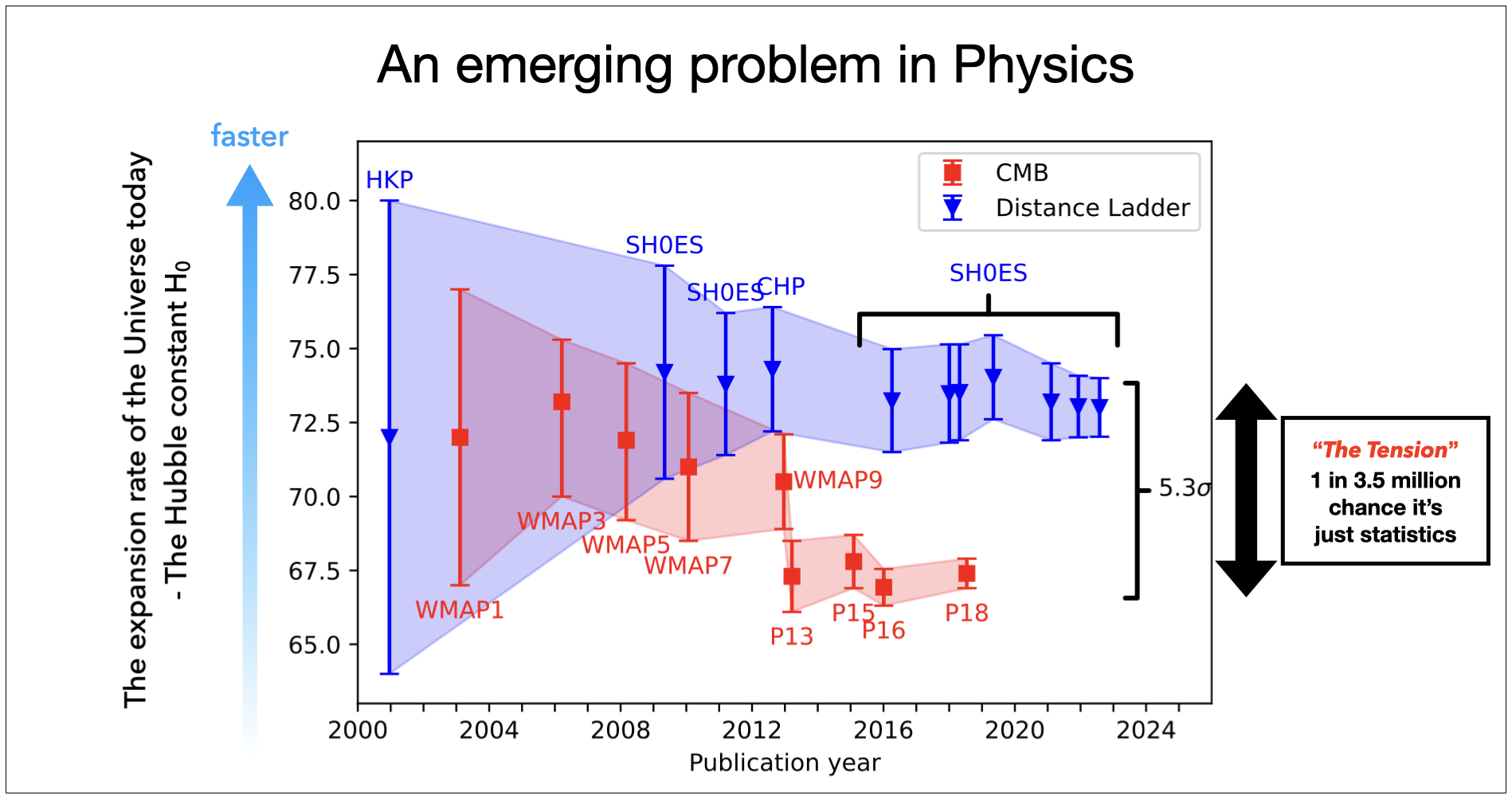Our Mysterious Universe Still Evades Cosmological Understanding

By Shari Lifson
Science can uncover new knowledge, but it can also reveal what we don’t understand. New research is shedding light on a cosmological mystery that’s been brewing since the 1920s. The mystery involves the make-up and expansion of the universe. Scientists know the universe is expanding at a specific rate. But, depending on how it’s measured, they still don’t agree on exactly what that rate of expansion is and what is causing the universe to move apart so quickly.
Not only is the universe expanding – the movement is unexpectedly accelerating as galaxies travel away from each other. Astronomers named the force that is mysteriously causing this acceleration Dark Energy. It accounts for around 68% of the universe’s energy and matter. But, the mystery deepens, we don’t know exactly what Dark Energy is and why it causes acceleration.
The rate at which the universe is expanding has been challenging to quantify from the time Edwin Hubble first measured it in 1929. Since then, it has been measured directly using distance markers such as variable stars and supernovae in the local universe or extrapolated from the cosmic microwave background heat left over from the Big Bang and interpreted using our understanding of the composition of the universe, called the Standard Model of Cosmology. So far, observations from the local and early universe don’t match up as models predict they should, causing a discrepancy named the “Hubble tension.” Now results from two new studies are shedding light on the conundrum.
Supernova Cosmic Milepost Markers
In May 2022 the SH0ES Team led by Nobel Laureate Adam Riess of the Space Telescope Science Institute and the Johns Hopkins University in Baltimore, Maryland released an update to the rate of expansion based on over 30 years of Hubble observations. They measured 42 supernova milepost markers with the Hubble Space Telescope.
“You are getting the most precise measure of the expansion rate for the universe from the gold standard of telescopes and cosmic mile markers,” said Reiss.
However, this new precise measurement still doesn’t agree with predictions from the Standard Cosmological Model and the European Space Agency’s Planck mission measurements of the cosmic microwave background from the early universe. The research does give astronomers confidence in the precision of local observations, with over 30 years of Hubble data, and therefore points to a possible, more fundamental, reason for this discrepancy.
It could be our understanding of the physics of the universe needs a revision.
Mapping the Clumpy Universe
A study released in January 2023 by an international team of over 150 scientists adds more clues to the cosmological puzzle. It is a new comprehensive map of matter in the universe using data from the Dark Energy Survey, taken at Cerro Tololo Observatory in Chile, operated by NSF’s NOIRLab and the South Pole Telescope, which captures cosmic microwave background, from Antarctica.
The study revealed a discrepancy in how matter, including Dark Energy, is distributed in the universe from what is predicted by the Standard Model. The data show a universe that is less clumpy and more spaced out than previously thought. Although more studies are needed to determine if the observations are precise, it seems this anomaly might point to the same issue as the Hubble research.

“There is no known physical explanation for this discrepancy,” the researchers said in one of their studies. “This tension could result from physics beyond the standard cosmological constant and cold dark matter model (ΛCDM), or it could result from systematic biases in the analyses.”
A Growing Difference
Both research results, using different methods and observatories, point to unexplained differences between observational studies and widely accepted models. These differences could be evidence that there is something fundamental about our universe we don’t understand and therefore can’t predict with our models. The discrepancies have been growing in significance for the last 5-10 years and have broad support among a range of measurements, making it decreasingly likely they arise from experimental biases.

The good news for cosmology sleuths is we have new research tools both online now and coming in the next decade, that could help solve the puzzle. JWST, now operating a million miles from Earth, can observe mile markers even more accurately than Hubble. And in several years, two new surveys will begin with the Roman Space Telescope set to launch in 2027 and the Vera Rubin Observatory now under construction in Chile. In 2025 Rubin will start scanning the night sky, and with its extremely large field of view and immense camera, will comprehensively probe the nature of the Dark Energy. Roman will map the universe with a field of view that is 100 times that of Hubble’s. Experiments like LIGO, which tracks gravitational waves and new measurements of the cosmic microwave background may help improve early universe estimates and refine models.
We don’t have the solution to the discrepancies discovered by these studies yet, but researchers are currently exploring promising theories. Stay tuned, the next chapter in this quest for a better understanding of the mysteries of our amazing universe is coming soon!
Links:
Hubble press release: https://hubblesite.org/contents/news-releases/2022/news-2022-005
Hubble Paper: https://arxiv.org/pdf/2112.04510.pdf
DES press release: https://news.uchicago.edu/story/scientists-release-newly-accurate-map-all-matter-universe
DES papers at APS: https://physics.aps.org/articles/v16/s12
NSF’s NOIRLab Blog: https://noirlab.edu/public/blog/hubble-constant-result/
